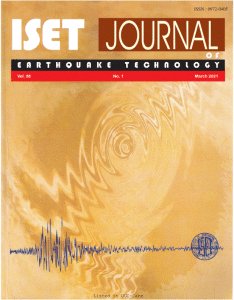Home > Issues & Journals
some crucial issues in earthquake response analysis of gravity dams
I.D. Gupta
Paper No.: 546
|
Vol.: 56
|
No.: 4
|
December, 2019
|
pp. 93-122

Abstract
The traditional pseudo-static method for design of gravity dams is governed mainly by the static stability against sliding, and not necessarily by the stresses. This method is based on highly reduced values of the seismic forces leading to unrealistically small values of the dynamic stresses due to earthquakes. On the other hand, the standard finite element method used for detailed time-history analyses is based on several unrealistic assumptions, which result in unrealistically high stresses in the dam. To ensure the seismic safety of gravity dams in a realistic way, the dynamic response analysis is required to be carried out with realistic modeling of the dam-water-foundation interaction effects. The effect of the stochastic nature of earthquake excitation on the response is also required to be accounted. Finally, the material properties of the dam and the foundation rock and the performance criteria used to assess the safety of dams also play very important role. This paper highlights the significance of all these crucial issues and suggests the ways to handle them appropriately for arriving at reliable design and evaluation of gravity dams.
Keywords: Gravity Dam, Foundation-Reservoir Interactions, Pseudo-Dynamic Method, Time-History Response Analysis, Substructure Method, Stochastic Effects, Material Properties
©2025. ISET. All Rights Reserved.